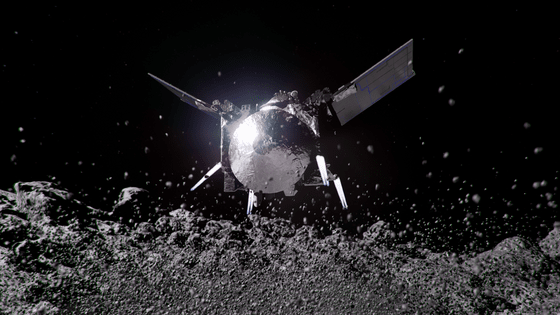The possibility of the 'God of Destruction' asteroid Apophis colliding with Earth is increasing due to a change in its orbit caused by the collision of an unknown asteroid.

On Friday, April 13, 2029, the asteroid
'God of Chaos' asteroid Apophis could still hit Earth in 2029, study hints — but we won't know for 3 more years | Live Science
https://www.livescience.com/space/asteroids/new-study-reveals-god-of-chaos-asteroid-apophis-could-still-hit-earth-in-2029-but-we-won-t-find-out-for-3-more-years
Collisions could increase chance of 'God of Destruction' asteroid Apophis hitting Earth | Space
https://www.space.com/collisions-could-increase-chance-apophis-hitting-earth
Apophis is a near-Earth asteroid named after the snake god Apep (Apopis) , the incarnation of chaos in Egyptian mythology. As soon as it was discovered in 2004, Apophis rose to the top of the list of potentially hazardous asteroids (PHAs) that have a high risk of colliding with Earth and causing great damage, and has remained at the top of the European Space Agency's (ESA) 'Collision Risk List' and NASA's 'Sentry Risk Table' for about 20 years since then.
Subsequently, based on its orbit when it approached Earth in March 2021, NASA predicted that 'Apophis will not collide with Earth for at least the next 100 years,' so Apophis will be removed from the list of asteroids at risk of collision.

But large asteroids like Apophis can be altered by collisions with smaller asteroids, and researchers have previously warned that such a scenario could put Apophis on a collision course with Earth as soon as 2029.
In
But in a new study published in August, Wiegert simulated a collision scenario between an unknown asteroid and Apophis, and found that it's possible that an undiscovered object could alter Apophis's orbit and put it on a collision course with Earth.

by NASA Goddard Space Flight Center
The simulation results showed that there is less than a one in a million chance that an unknown asteroid will collide with Apophis by 2029, and less than a one in a billion chance that such an impact would 'significantly alter the 2029 miss distance,' meaning that the asteroid's distance from Earth at its closest approach to Earth would be significantly different than previously predicted.
In this case, the possibility is that the orbit will change, and it has not been specified whether the object will move closer or farther away from the Earth, so the actual risk of a collision is even lower.
If Apophis were to collide with Earth, it is estimated that the energy released would be equivalent to more than 1,000 megatons of TNT, which would cause massive damage on Earth with the power equivalent to dozens or hundreds of nuclear weapons, so the low probability of this happening is fortunate for humanity.
However, we will have to wait until 2027 to know if Apophis is on track with its predicted course. That's because Apophis orbits so close to the Sun that it can only be seen when it gets very close. This means that there is very little time between realizing in 2027 that Apophis is on a collision course with Earth and launching a mission like DART to ram the asteroid and change its orbit before it approaches in 2029.
NASA's 'experiment to hit an asteroid with a spacecraft and change its orbit' revealed that the asteroid's orbit changed more than expected - GIGAZINE

by NASA/Johns Hopkins APL/Steve Gribben
'A mission like DART could help return Apophis to a safe orbit, but we don't yet know how it would work, or if it would actually work,' Wiegert said. 'It's also difficult to know what other methods of orbital correction might work, but scientists are actively exploring these options.'
Related Posts:
in Science, , Posted by log1l_ks







